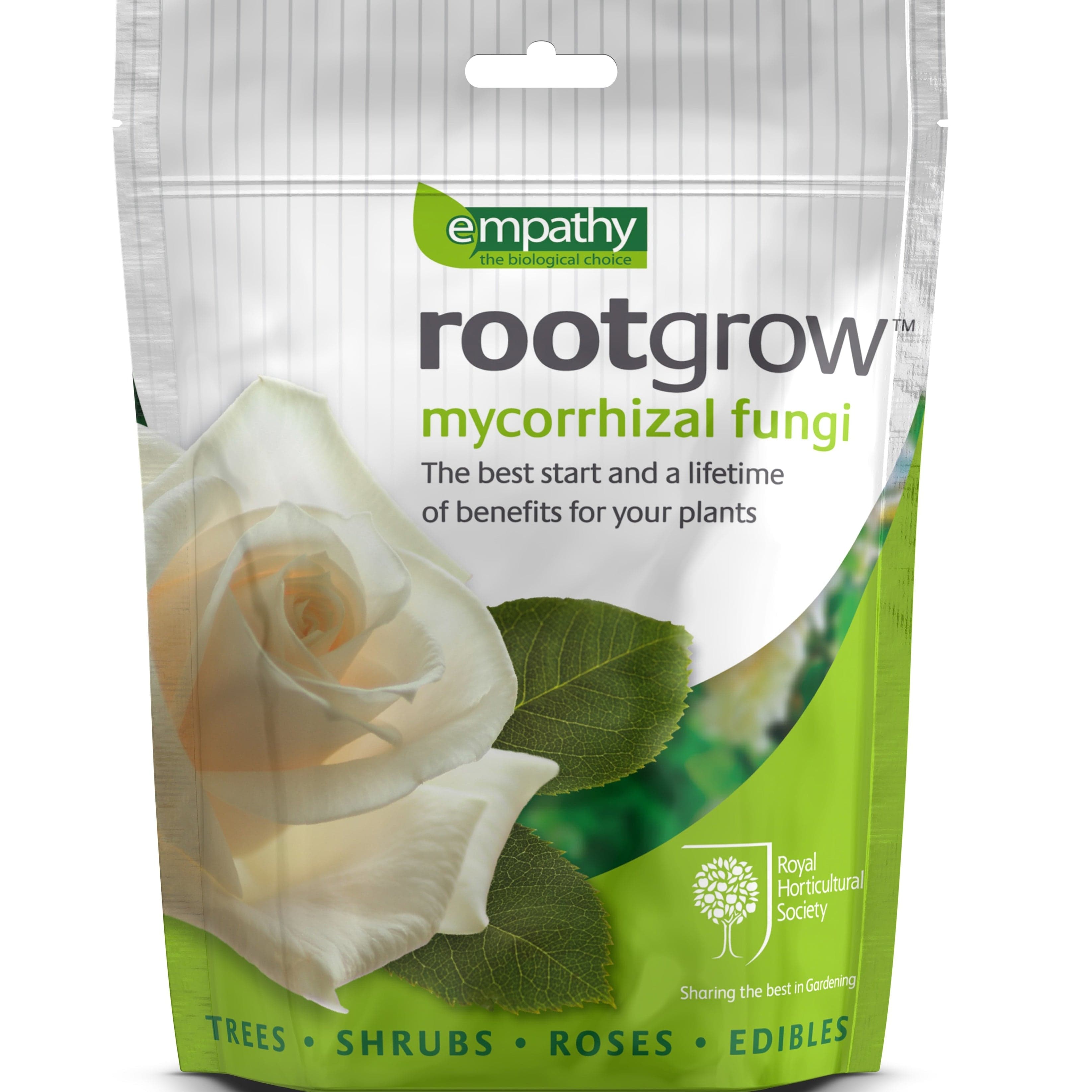How to Grow Peppers

Sweet peppers - or bell peppers - have become a kitchen staple, whether you eat them raw with dips, chargrilled in fajitas and curries or roasted in a panini with soft cheese. Pepper plants have a reputation for being a little temperamental to grow, but if you get the light, heat and feeding right, there’s no reason they should be any more difficult than chillies - they’re even easier to grow in pots. Follow these tips and tricks from our vegetable grower for everything you need to know. Peppers and chillies are often grown together because they need similar conditions, but there are a few subtle differences, so make sure you check out our chilli grow guide too, and get great results from all your plants.
Jump to:
- Which peppers?
- Growing from seed
- Growing from plants
- Growing in pots
- Harvesting
- Storing
- Problem solving
Which pepper plants to choose
The kind of peppers you grow depends largely on how you like to eat them. Long, thin pointed peppers are best for barbecuing and stuffing with cream cheese. They’re sweeter and have thinner skins, so those chargrilled flavours really complement them. For a smaller version, try yellow banana peppers.
Chunky and rounded bell peppers like Yellow Bell or Maccabi are the most versatile, being used for salads, snacking and roasting too. They’re best for curries and chilli non carnes too, as they have thicker walls and keep their shape well when cooked. You can also find mini versions.
Then there are padron peppers, which look like green chillies but have a mild flavour (although the odd one can surprise you with a blast of heat!). These are the traditional tapas pepper, quick-fried, sprinkled with sea salt and best served in the back streets of Barcelona.
Grafted peppers (see below) may bring you better results, and compact or dwarf plants (like the banana pepper) can be easier to grow as they need no support, although no variety grows outrageously tall.
You might also want to consider a plant with smaller fruits if you’re planning to grow outdoors, as smaller peppers take less time and heat to mature.
What’s a grafted pepper plant?
Grafting is where the plant breeder joins together two different vegetable plants which have certain qualities (such as disease resistance or vigorous growth) to produce a plant with the best features of both.This can really benefit more tender vegetables such as peppers.
Grafted plants tend to have better root systems, which means the plants can take up more water and nutrients from the soil, growing bigger and producing more fruit. Many of them also seem to crop for a longer period of time.
Grafted sweet peppers are an especially good idea if you’re planning to grow them outdoors - they’ll stand up to more drought, heat and cold than non-grafted plants, saving you money and disappointment.

Growing peppers from seed
You can sow your pepper seeds indoors as early as January if you have a heated propagator, or from March if you don't. Plant them in individual cells of seedling compost or in coir pellets, then when their second pair of leaves appear, transplant the seedlings into individual 7.5cm pots. Once the plants are established, you can move them into their final pots (at least 30cm wide and deep, one plant per pot) or plant them outside after all risk of frost has passed.
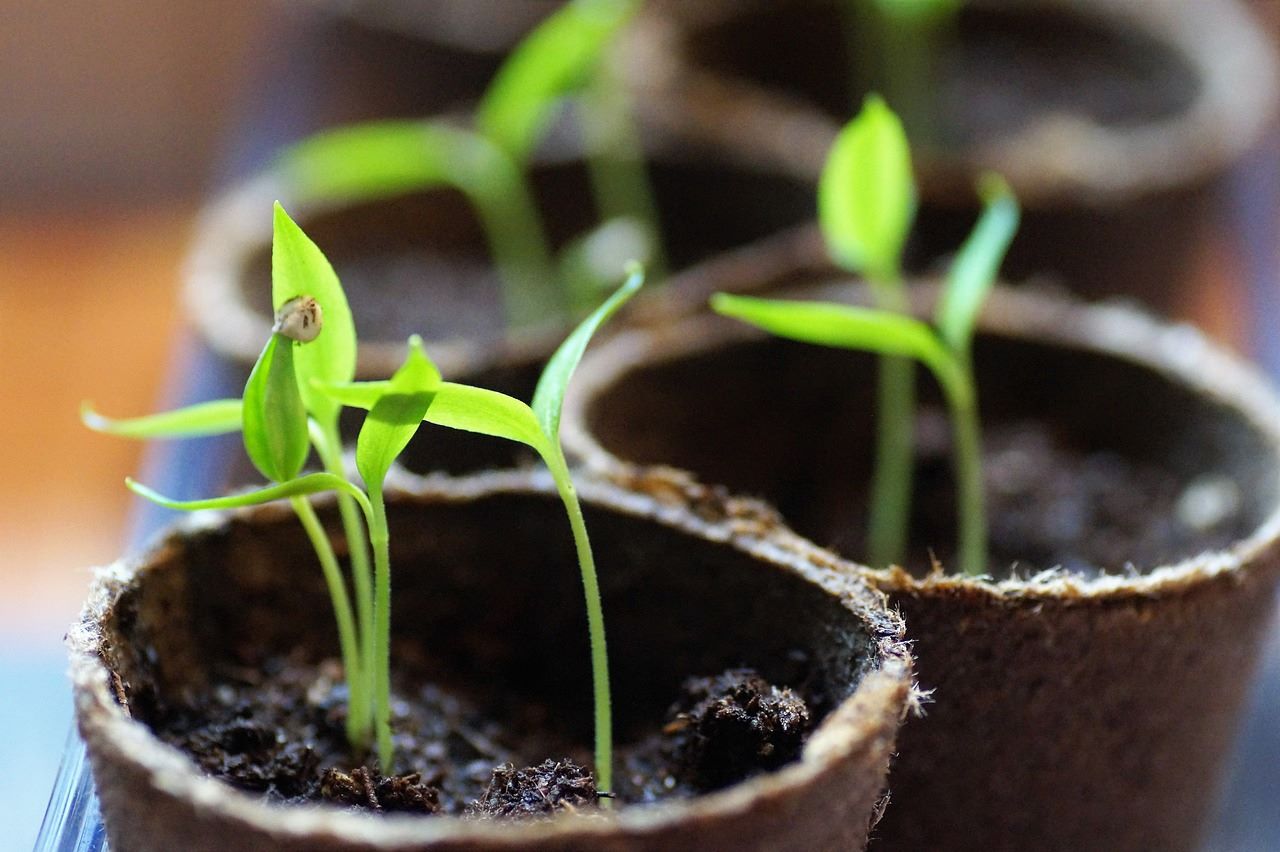
Growing peppers from plants
If you’ve left it a bit late to sow seeds, or just want a more reliable way of growing, you can buy your peppers as young plants which can be grown on in pots. If you’re growing outdoors, your plants should be hardened off (gradually introduced to the great outdoors for increasing lengths of time and brought back in at night) then planted out only after the last frost date has passed. This varies according to where you live, and can be checked here. Otherwise, simply pot up your plants and keep them in a sunny place indoors.
Can you grow peppers outdoors?
Peppers generally do best in a sunny spot indoors or in a heated greenhouse or polytunnel, but there’s no reason you shouldn’t give them a go on a sunny patio or balcony in the summer. Make sure you don’t put them outside too early, when there’s still a risk of frost, and plant them in pots so you can easily move them indoors in case of a change in the weather. If you are planting outdoors, you may get better results from a grafted pepper variety (see above).
When can I plant peppers?
Pepper seeds can be sown indoors in March or earlier still in January if you have heat mats and grow lights, or a heated propagator.
If you’re growing peppers from plants, you can pot them up indoors as early as March or April, but it’s best to wait until May or June if you’re growing them outside - and in case of late frosts, have some sort of covering handy, like horticultural fleece or cloches.
How long do peppers take to grow?
Peppers can take between sixty and ninety days from sowing seeds to harvesting, depending on the variety. Using plants will obviously cut this time down by a few weeks and your peppers should be ready to harvest from late summer and into autumn. You can pick peppers at any stage of their colour development, depending on how you like them. If they still haven’t turned red (or their final colour) by late September, you may need to put them under a grow light in a warm place - or just eat them green.
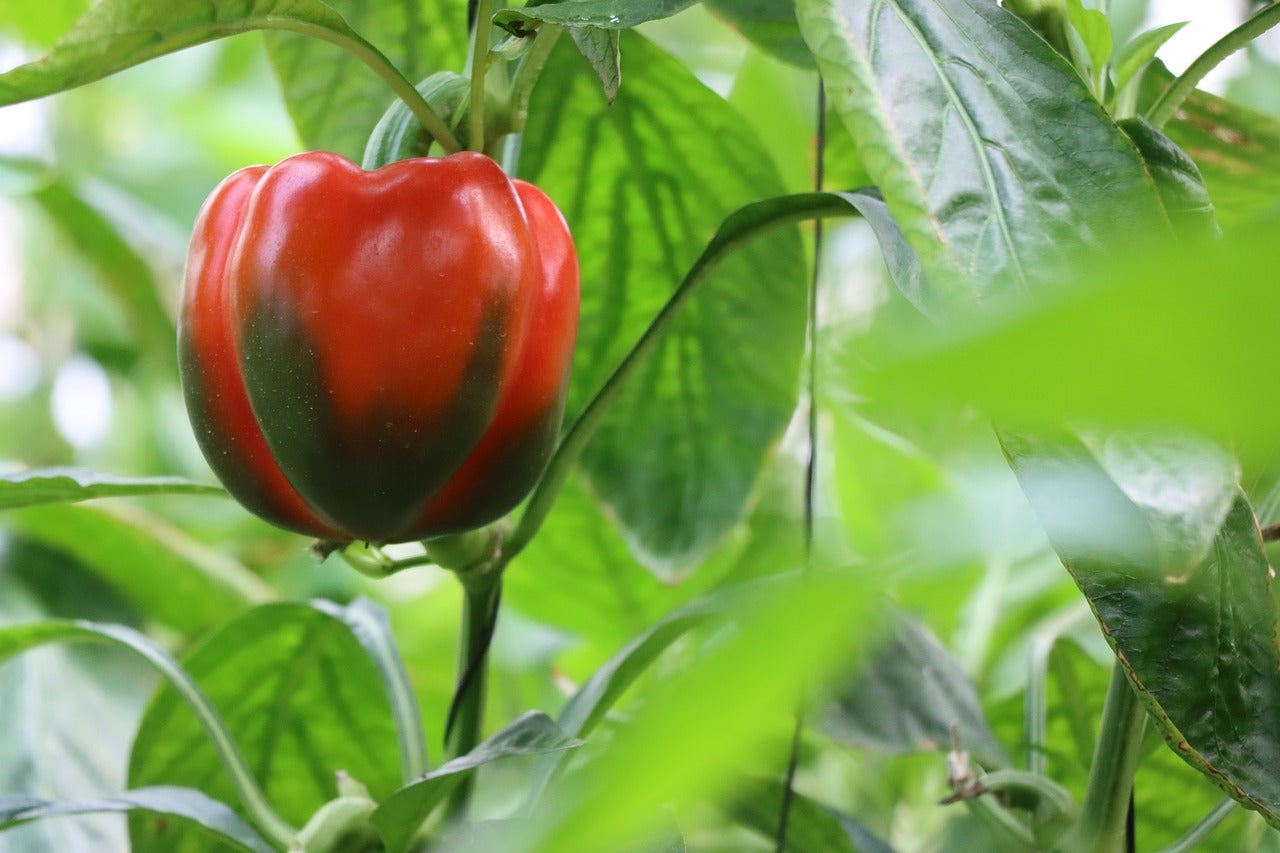
How much sun do peppers need?
Pepper plants need plenty of heat and light to grow and fruit, so choose a warm greenhouse, polytunnel, conservatory or windowsill for your plants, or a sheltered sunny spot outdoors (preferably south facing) where your plants will get a full six to eight hours of sunlight daily throughout the growing season.
How much water do pepper plants need?
Whereas chilli plants prefer to have dry soil between waterings, sweet peppers need a consistently moist soil. When the weather heats up, or if your peppers are grown indoors, you should check them every day and water if needed. Peppers grown under cover should also be misted regularly, to prevent red spider mites (see below).
How to feed pepper plants
When you first plant your peppers or pot on your seedlings, start them off with a sprinkle of general purpose plant food, unless your compost already contains some. If you’re using topsoil only, you’ll need to add calcium to the soil in the form of milk powder, to prevent blossom end rot. When the flowers start to appear, that’s when your plant really needs a regular feeding schedule, to allow the fruits to develop properly. Use a high potash (AKA potassium) feed such as tomato fertiliser every week. Banana skins are high in potassium too, so cutting them up and adding them to the soil will give your plants a boost.
What kind of soil do pepper plants need?
Pepper plants do best in a fertile, well-draining soil - standard garden compost is fine, or a mixture of one part topsoil to three parts compost. To help the soil drain, you can add broken crockery or gravel to the bottom of your pots.
Do pepper plants need support?
Pepper plants can get top heavy as the fruits develop, putting the stems at risk of bending or breaking, so getting some support in place early on is a good idea. Plant a 60cm garden cane about 3cm away from the stem, then tie it in gently with string, wool, pipe cleaners or soft plant ties.
How to prune pepper plants
Pepper plants shouldn’t need any pruning, other than to remove the dead flowers once they’re finished. To encourage the plant to grow bushier rather than taller, you can pinch out (trim by hand) the top of the main stems when the plant reaches about 20cm in height. This is a good idea for taller varieties as peppers are heavy fruits and can break the stems as they grow bigger.
Growing sweet peppers in pots
Peppers are ideal for growing in pots. When you first pot on your seedlings, a 9cm pot will be sufficient for each one - they’re pretty fragile when young, so take care not to break the stems. Use a good quality compost, firm down the soil around the plant gently by hand and give your plant a watering. After a short while the plants will reach about 10cm tall - time to pot them on to their permanent homes! Choose pots which are at least 30cm deep and wide with good drainage holes at the bottom, and add a support such as a bamboo cane if they’re a variety that grows tall. Your plants will do best under cover, but you can move the pots to a sunny patio from June onwards if you prefer.
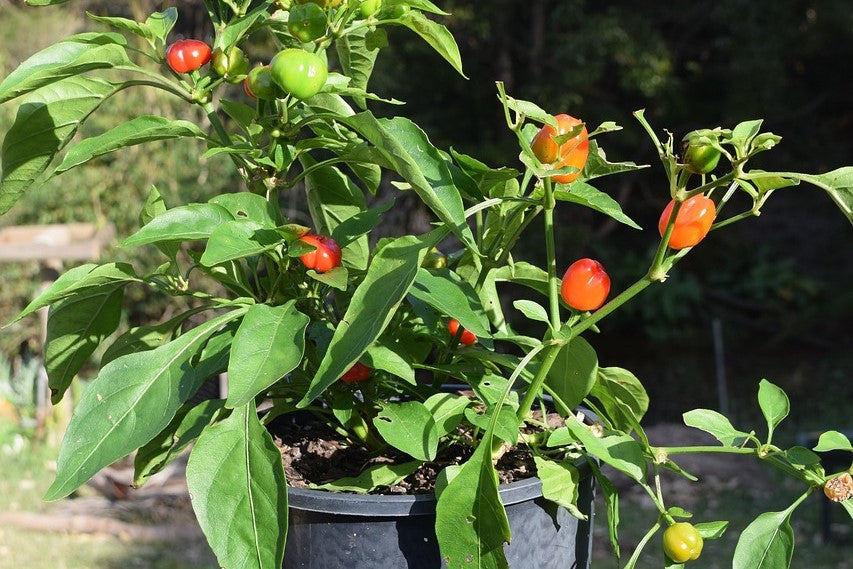
How to harvest peppers
To harvest your peppers, simply cut them off at the long green stalk with a sharp knife or scissors once they reach the size and colour you want. Peppers are ready to pick from late summer, or about 60-90 days after planting. Pick them when they’re green or leave them to ripen (most varieties ripen to red or yellow), to develop a sweeter flavour. Keep feeding your plants to renew their energy and encourage them to produce more.
How to store peppers
Although peppers are best eaten as fresh as possible, they’ll keep for about a week on the kitchen counter or double that in the fridge. You can also slice them up and freeze them, but as their water content is so high, they’ll lose their crunch once defrosted so they’ll have to be used for cooking. You can also make your peppers into soup or sauce and freeze it, or pickle them as an antipasto.
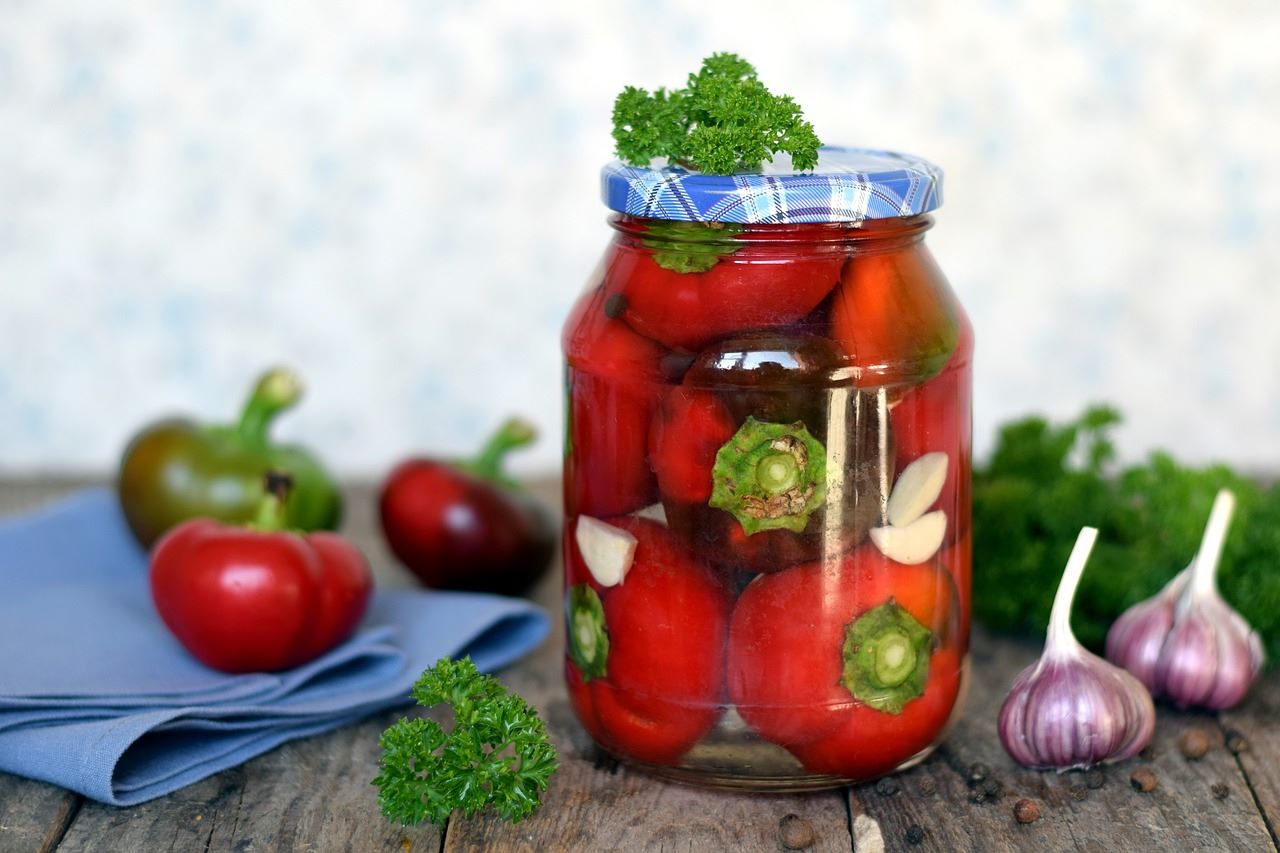
What’s wrong with my pepper plant?
It’s got no peppers
If your plant has produced flowers but few or no peppers, it’s probably down to one of three things.
- A lack of pollinators. This can be a problem with plants grown indoors, so always make sure you leave windows or doors open regularly where you’re growing, so the bees can get in. You can also help by misting and hand pollinating your plants - use a paintbrush and transfer pollen from one flower to another by gently brushing inside the middle of each flower on the plant.
- Not enough heat. Peppers need a lot of it, so they might take their sweet time (see what I did there?) to develop, but be patient and keep feeding them. They should start to produce as the weather warms up, and if they don’t, you could try using a heat lamp.
- Nutrient deficiency. If your plants are flowering well but not fruiting, they might be lacking in magnesium - try sprinkling some Epsom salts around the base of the plant before watering.
The peppers aren’t going red
Some pepper varieties take longer to fully ripen than others, which means that while some of your peppers might be maturing, others stubbornly stay green. You can either shrug and use them green, or ramp up the light levels to encourage them to change colour. You can do this by moving your pots to a sunnier, warmer place or even putting them under a grow light. Alternatively, pick them green and ripen in the kitchen - putting them in a bowl with an overripe banana helps.
Whitefly
Whiteflies look like small white moths and are most commonly found on the underside of leaves. If left to their own malign devices they will feed on the leaves, damaging them and turning them yellow. Your best defence against whitefly is to simply spray your plant down with some water or a mix of water, vegetable oil and soap, aiming it at the whiteflies to try and wash them off. Make sure you check the whole plant and get as many of the tiny freaks off as possible.
Aphids
Aphids are the little green bugs that like to party on the plant stems, particularly at the joints, and also the underside of leaves. They cause leaves and fruit to become discoloured and misshapen. Aphids also leave behind a sticky residue known as honeydew which can then promote the growth of a fungus known as sooty mould - about as fun as it sounds. You can use soapy water to blast the aphids off the plant or wipe them off with a damp piece of kitchen roll.
Slugs and snails
Slugs and snails can quickly devour young pepper plants and destroy them before they’ve even had a chance to grow. They can affect the fruit as well, causing what looks like little bite marks.
The best non-lethal way to keep them away is with a barrier - this can be made of copper wire, which will react with the slug’s mucus to deter them, or crushed eggshells/gravel which they find difficult to cross.
In case of severe slug attacks, wool pellets are a humane and less harmful alternative to the blue chemical slug pellets you can buy, and won’t harm beneficial wildlife such as hedgehogs. You may also have some luck with beer traps - this is what supermarket own brand lager was made for!
Powdery mildew
Powdery mildew is a fungal disease that usually attacks the leaves and stems of a plant, leaving a white powdery residue. It can cause stunted growth and affect crop yields.
Powdery mildew thrives in damp, humid conditions. To prevent it from affecting your plant, always water at the base of the plant in the morning so there’s enough time for the surface water to evaporate, and try to prevent splashing from the ground to the leaves.
If your plant is suffering from powdery mildew, prune away infected leaves at the stem with a sharp, sterilised tool. Be sure to sterilise the tool before touching another part of the plant or other plants in your garden as this can cause the infection to spread. You can then spray the plant down with a mix of one teaspoon of baking soda mixed with a litre of water to prevent further occurrences.
Blossom end rot
Blossom end rot appears as black, rotten blotches that develop from the end of the fruit where the flower was. More often seen on tomatoes, it affects pepper plants too, and is caused by a lack of calcium in the plant’s cells.
Good quality compost will always have enough calcium in it, but if the soil has been too dry for extended periods of time, the plant can’t extract the calcium from it.
To prevent blossom end rot, keep the soil consistently moist. You can also add a bit of powdered milk to the hole when planting. If your plants do get it, add more powdered milk around the base of them and the problem should go away.
